So you’re not sure how long your favorite coffee creamer lasts or if it ever goes bad.
That’s understandable. There are lots of options on the market, and it’s easy to get lost.
While all coffee creamers eventually spoil or become unsafe to use, some (e.g., powdered creamers) last much longer than others. Others, like regular half and half, last for only a couple of weeks, and a week or so after opening.
This guide is for you if you want to get familiar with coffee creamers and learn more about different types and their shelf life, signs of spoilage, and storage practices.
If you just want to learn about the creamer you have on hand, feel free to jump to the section you’re interested in:
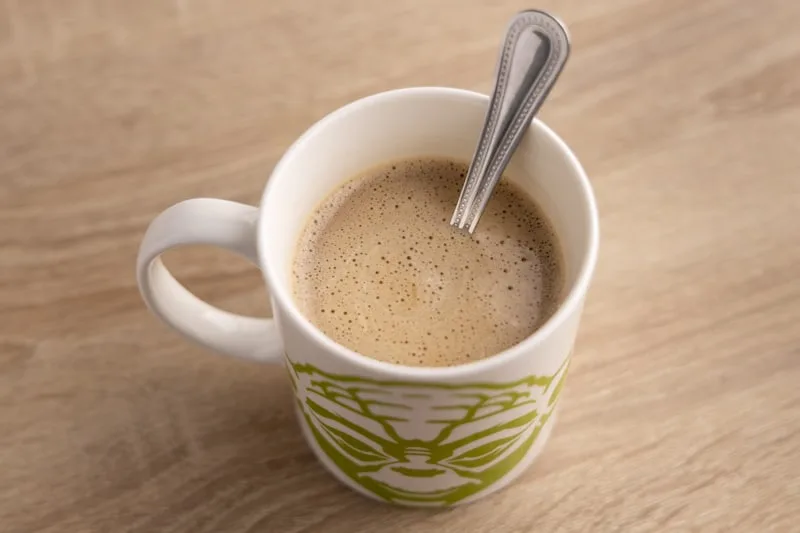
Liquid Dairy Creamers
Liquid dairy creamers include a whole variety of products. Those are your typical dairy products, such as half and half or heavy cream, and their relatives that come in many flavors, like the Chobani Coffee Creamer.
Many products fall into this category, and each one is a bit different when it comes to storage, shelf life, or spoilage.
Below, I try to simplify all of that by giving you some general guidelines that apply to most of them.
Do Liquid Dairy Creamers Go Bad?
All liquid dairy creamers go bad eventually, but some of them (like half and half) much sooner than others. And once you open the bottle or box, you only a couple of days to a week or so before they turn sour, and you have to discard them.
When checking if your dairy creamer is safe to use, examine the following:
- Storage time. If your creamer sits in storage for way too long, it’s no longer safe. It’s not necessarily spoiled or bad, but at a certain point, using it gets risky, and it’s better to err on the side of caution. I talk about specific periods in the shelf life section.
- Container. If it’s still unopened, but it’s bulging or puffed up, assume the product is spoiled.
- Appearance. If the creamer is clearly separated, chunky, or the surface is discolored or moldy, it’s done for. Separation or chunkiness don’t always mean the creamer is spoiled, but both make the product useless.
- Smell. If the creamer smells sour, moldy, or “funny” in any way, throw it out.
- Taste. Again, if the creamer tastes sour instead of slightly sweet and reminding you of the flavor option you chose, it’s no good.
A bit of separated liquid on top of a dairy product like heavy cream is perfectly normal, especially if it sits in storage for a few days already. Separation becomes a problem when it’s much more pronounced, i.e., there’s a layer of liquid on top, and the bottom is super chunky.
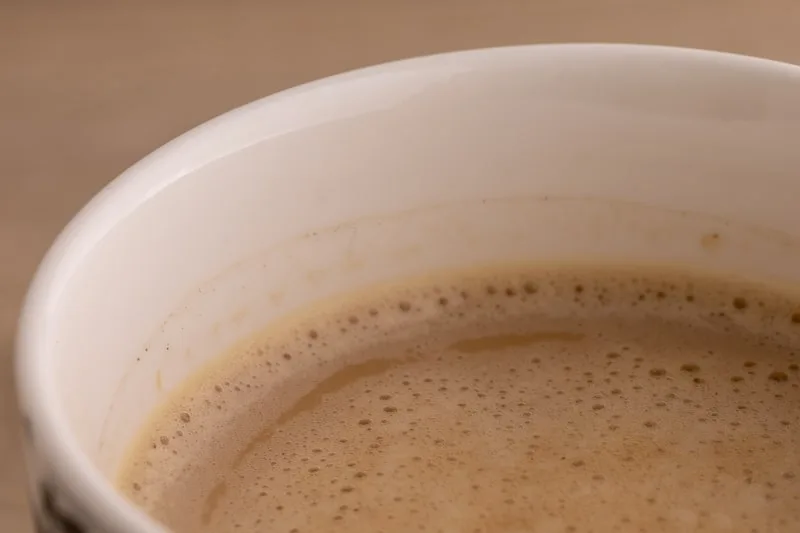
How Long Do Liquid Dairy Creamers Last?
Liquid dairy creamers last between two weeks and about half a year, depending on what you choose.
Half and half and heavy cream are sold refrigerated and come with a shelf life of a couple of weeks tops. They also tend to keep for a couple of days past the printed date at most.
But there are also shelf-stable dairy creamers, and their shelf life is much more extended, approaching six months or so. They also last longer after their “expiration” date – at least a few weeks, if not more.
An easy way to go about it is to check the date on the label, and:
- if the product requires refrigeration, assume it keeps for 3 to 5 days past its date
- if it’s shelf-stable, add a month to its date
Of course, those are only estimates. And before using an expired creamer, you should always check if the product is safe to use (using the guidelines outlined above).
Once you open the creamer, you get between 5 and 10 days of storage time, depending on the product and brand. Check the label for specifics. For instance, heavy cream lasts for up to a week after opening.
The mentioned storage times for opened liquid dairy creamers are quite long already. Because of that, trying to squeeze in an extra day or so is risky. I bet you wouldn’t like to get sick after using a spoiled creamer.
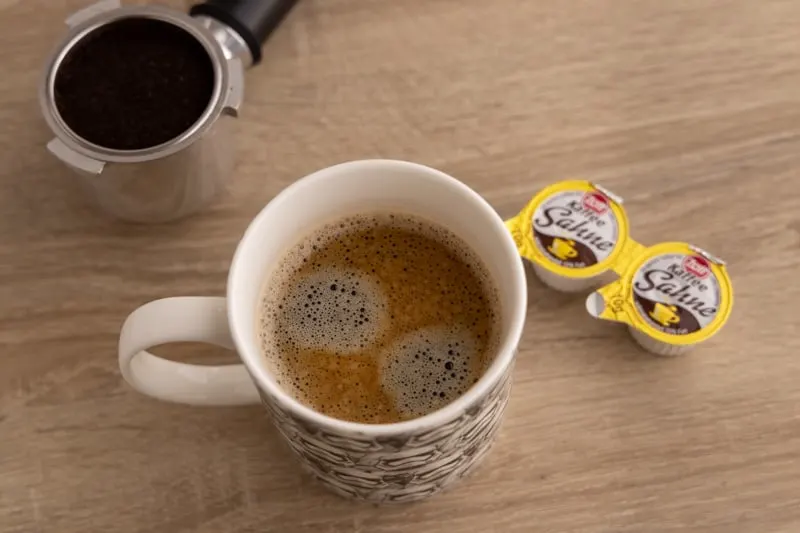
Do Dairy Creamers Need to Be Refrigerated?
All liquid dairy creamers require refrigeration after opening, but only creamers that are sold refrigerated need it at all times. Shelf-stable dairy creamers are okay at room temperature as long as they are unopened.
So, how to tell which is which?
The two options are:
- The go-to option. Check the label. If it requires refrigeration, the label will certainly say so.
- The lazy option. Think if it was in the refrigerated section in the supermarket or not. If it was, chances are it needs to sit in the fridge. Warning: sometimes, the clerks put shelf-stable creamers in the refrigerators anyway.
When in doubt, keep the dairy creamers refrigerated.
It’s like with regular milk. There are the bottles that sit in the fridges, and there are those shelf-stable cartons that sit in a different aisle.
Refrigerated creamers shouldn’t sit out for more than two hours, or more than 1 hour if the temperature is 90°F (or 32°C) or above.
Liquid Non-Dairy Creamers
There are dozens of options if you’re into liquid non-dairy creamers or whiteners. Those include:
- milk alternatives, such as soy, rice, oat, almond, or coconut milk
- dedicated creamers, such as Coffee Mate or International Delight; these are often based on the non-dairy milk alternatives listed above
When it comes to storage practices, shelf life, and going bad, liquid non-dairy creamers are pretty similar to their dairy counterparts.
Let’s talk about the specifics.
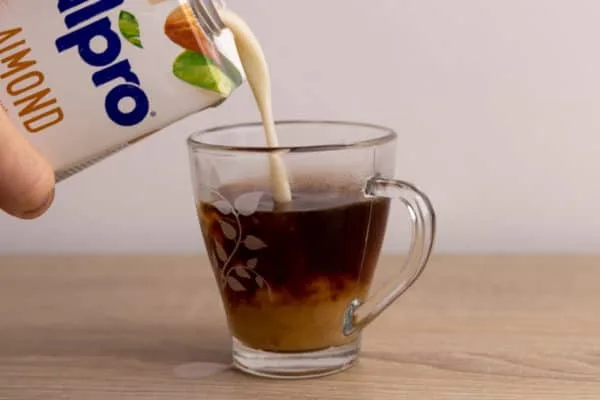
Does Liquid Non-Dairy Creamer Go Bad?
All liquid non-dairy creamers eventually become unsafe to use, but some of them last much longer than others. But no matter which one is your favorite, they all don’t keep for long once you open the container.
When you want to tell if your non-dairy creamer is bad, consider the following:
- Time you store it. All creamers keep for some time past the printed date (see the next section for details), but at some point, you need to draw a line in the sand and decide they are no longer safe to drink. And when it comes to a creamer that’s already opened, I suggest sticking to what the brand recommends.
- How the container looks. If it’s bulging or leaky, discard that creamer.
- Appearance. If the liquid has changed color or texture (e.g., became chunky), or there’s mold anywhere, get rid of it. To check these qualities, pour the creamer into an empty glass before adding it to your coffee.
- Smell. If it gives off an off, sour, or foul aroma, it’s no good.
- Taste. If everything says your creamer is okay, the taste test is how you decide if it’s good enough to use. If the creamer tastes sour or “weird,” pour it down the drain.
How Long Does Liquid Non-Dairy Creamer Last?
Shelf-stable non-dairy creamers typically last for 6 to 12 months, and they keep for a few extra weeks, possibly more. Refrigerated non-dairy creamers, on the other hand, usually have a much shorter shelf life and retain quality for an extra week or so past the printed date.
The easy way to go about that is to assume the longer the product’s shelf life, the longer it keeps quality past its date. That means only a few days if the product lasts a couple of weeks, and more than a month or two if it lasts more than a year.
Once you open the bottle or container, you typically get 5 to 10 days of storage time. But make sure to read the label for specifics because some brands extend that period to up to two weeks.
If your non-dairy creamer is open for more than the specified time frame, assume that it’s spoiled. It’s not necessarily bad, but it’s not safe to use anymore either.
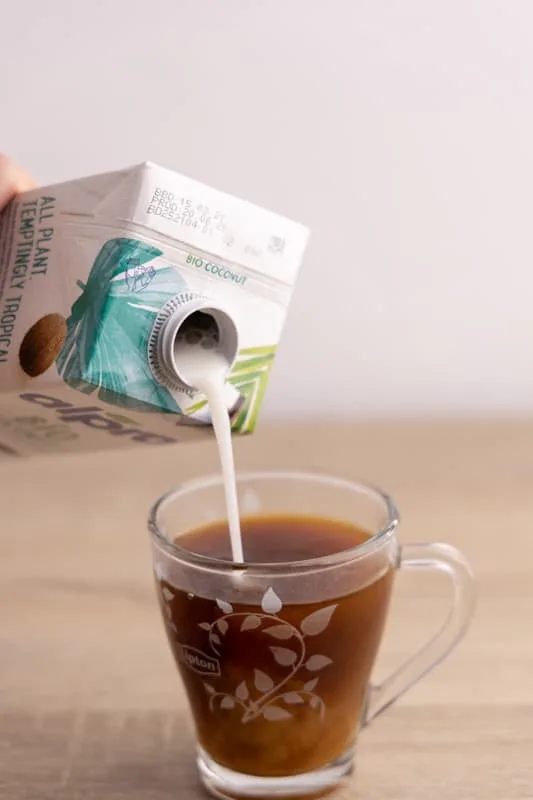
Does Non-Dairy Creamer Need to Be Refrigerated?
All liquid non-dairy creamers need to sit in the fridge after opening, but only refrigerated creamers need to be there at all times. Shelf-stable non-dairy creamers, like dairy-free milks in aseptic cartons, are okay on the counter until you open the container.
To tell if your is shelf-stable or not, read the label, or recall where it sat in the grocery store.
Most non-dairy creamers are shelf-stable, but select brands (like International Delight) require refrigeration at all times.
Because of that, it’s good to make sure if yours isn’t one of those that need to sit in the fridge before tossing it in a kitchen cupboard. And again, if you’re not sure what to do, refrigeration is your best bet.
Individual Coffee Creamers
Individual creamers, sometimes called single-serve coffee creamers, are those tiny individual creamer cups you often see in restaurants and hotel rooms.
Some popular examples include non-dairy singles from Coffee Mate and International Delight, but also those tiny cups of half and half meant to be used as creamers.
Fortunately, no matter if you opt for the dairy-based or dairy-free option, shelf life and spoilage signs are the same.
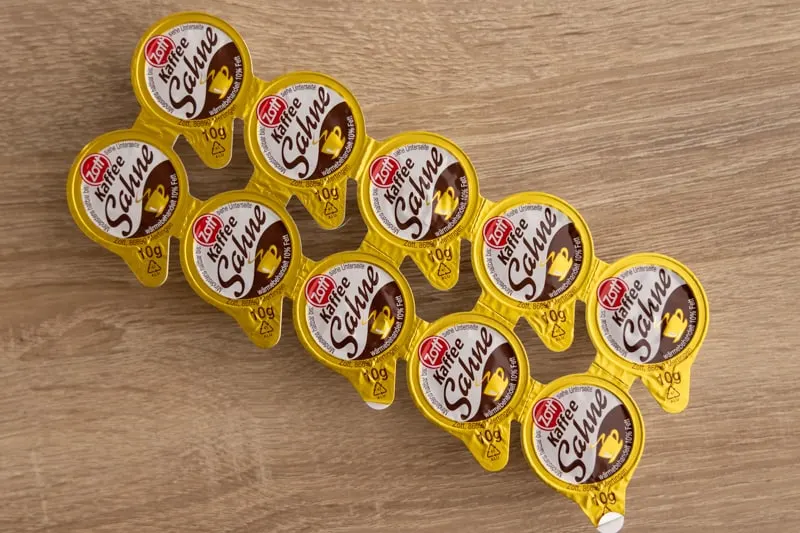
Do Creamer Singles Go Bad?
Creamer singles can go bad, but they stay safe to use for a long time, way past the date printed on the label.
These are basically tiny cans, and as you already know, canned food lasts for a long time.
The production process is simple: the creamer is heated to kill bacteria and sealed in small cups. That’s done in an almost sterile environment, so the creamer is safe as long as it’s unopened and the seal isn’t compromised.
That said, there are a couple of things to do before you use your long-expired singles:
- Check if the seal isn’t compromised and there aren’t any holes anywhere. Either means you should discard that creamer.
- Check the consistency. If the creamer is a bit chunky or its color has changed, it’s time for it to go.
- Assess the smell. If it smells sour or foul, it’s done for.
If none of the signs of spoilage are present, one last thing you can do is to taste the creamer itself before adding it to your coffee. This way, you don’t ruin a perfectly fine cup with a tasteless or sour creamer.
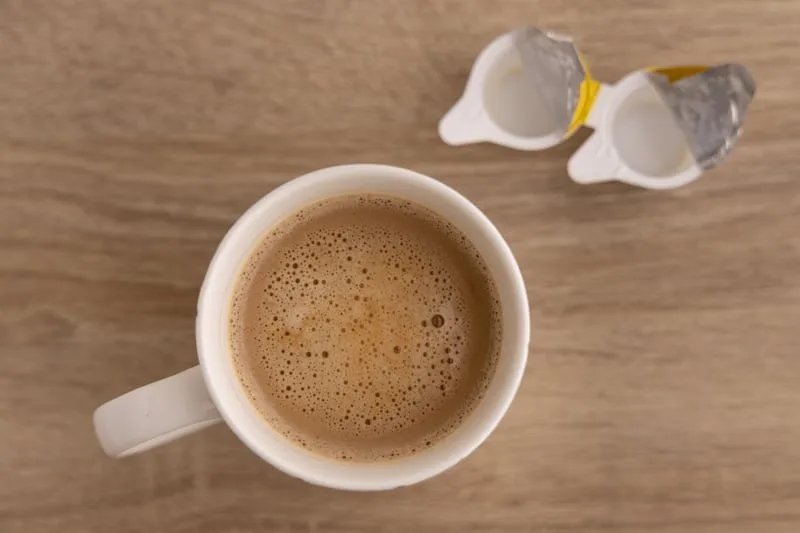
How Long Do Single Serve Creamers Last?
Individual coffee creamers come with a shelf life of about 6 months, and they easily last for an extra month or two past the printed date. Once you open the cup, use the whole thing immediately, or refrigerate the leftovers and use them within 3 to 4 days tops.
The printed date that I mentioned is a best-by date, which is about food quality and freshness, not safety. The sellers say the same when they recommend using the creamers before the “expiration” date.
If you’re wondering how long are single creamers good for after the printed date, there’s no good answer to that question. Since their shelf life is usually around half a year, extending that by an extra two months doesn’t seem like a stretch.
But if you don’t feel comfortable using an “expired” single creamer, it’s okay to discard it.
Always check expired singles for safety before using them.
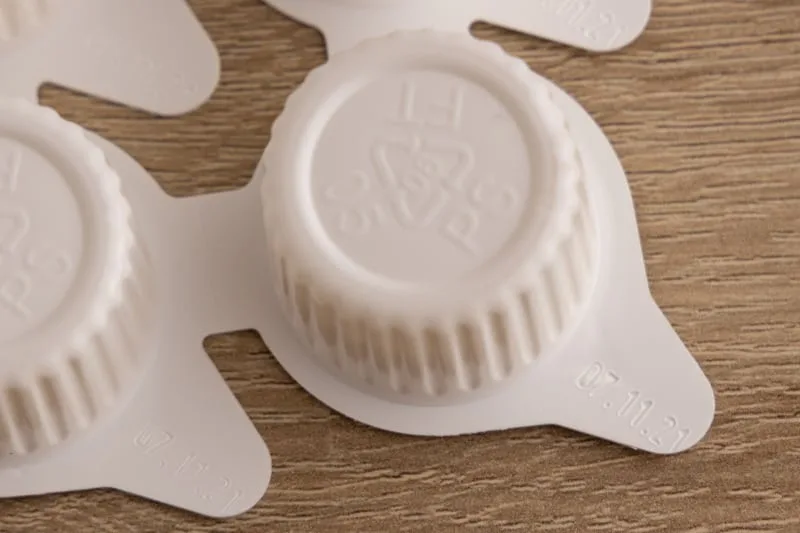
Storing Individual Creamers
Tiny creamers don’t require refrigeration. They are shelf-stable, and all they need is a place away from sources of heat. The stay-safe packaging takes care of the rest.
If you ever need to use half a cup and want to store the other half for later, make sure you refrigerate in a sealed container.
Final Thoughts on Single Serve Coffee Creamers
These are great if you don’t need a creamer regularly, but want to have something easy to use on hand.
There are no measuring issues or much thinking involved in using these. You just open a tiny individual creamer and pour it into your coffee. And if you need more, you open another one.
The only major downside I see to these is that they produce a lot of plastic and waste. And we all could use a bit less of that.
If you’re concerned about the environment and want to cut back on the amount of plastic in your life by a bit, consider switching to powdered creamers.
Powdered Coffee Creamers
This category includes all creamers and whiteners sold in powdered form, whether dairy-based or not. They all work pretty much the same in terms of storage, shelf life, and spoilage.
A good example is the Powder Coffee Creamer product line from Coffee Mate, but there are many other options as well.
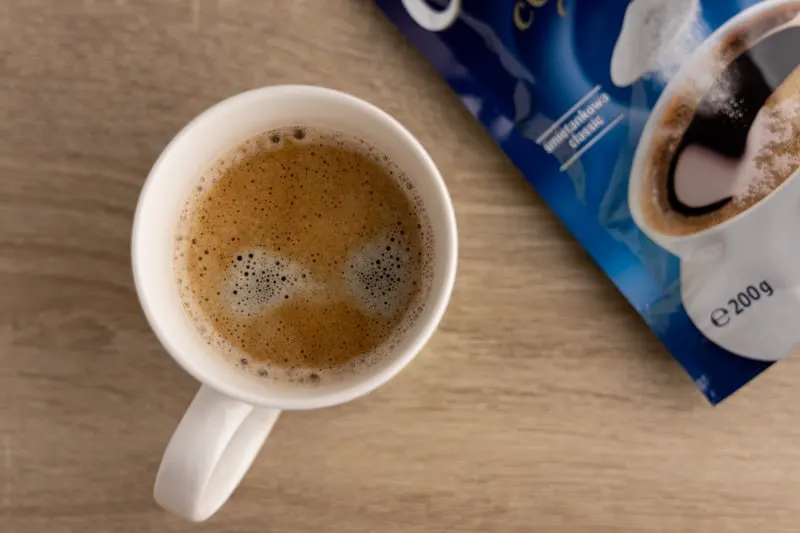
Do Powdered Coffee Creamers Go Bad?
Powdered creamers don’t really go bad, but they don’t retain their taste forever.
If you have a bag of expired powdered creamer, you first check if it’s safe to use, and if it is, give it a go. In most cases, your coffee will taste fine, or at least okayish if it’s a very old one.
Powdered coffee creamers are similar to powdered milk – as long as the powder seems to be perfectly fine, it’s worth giving it a try.
To check if yours is safe to use, open the bag and:
- Look for mold or any wet clumps.
- Check if there are any pantry bugs inside or if the powder’s color has changed.
- Give it a good whiff to make sure it still smells like the flavor suggests, not sour or moldy.
If everything looks and smells good, brew yourself a cup of coffee and try that creamer. If it tastes off or not good enough, discard the bag for quality reasons.
How Long Does Powdered Coffee Creamer Last?
Powdered coffee creamers come with a shelf life of 1 to 3 years, depending on the brand. They easily keep for an extra couple of months on top of that, often much longer.
Unfortunately, there’s no way of telling how long powdered creamers are good after expiration. It’s a combination of what you’re comfortable with and what your taste buds tell you.
If you’re not scared of using a powdered creamer that’s expired for over a year, then, by all means, use it. But if you wouldn’t feel comfortable using it, discard it.
Last, remember to assess the taste of your coffee after using that expired creamer.
The fact that the powder is safe doesn’t guarantee that your coffee will taste the way you like it. And if it doesn’t, get rid of the creamer.
Always check expired powdered creamers for signs of spoilage before using them.
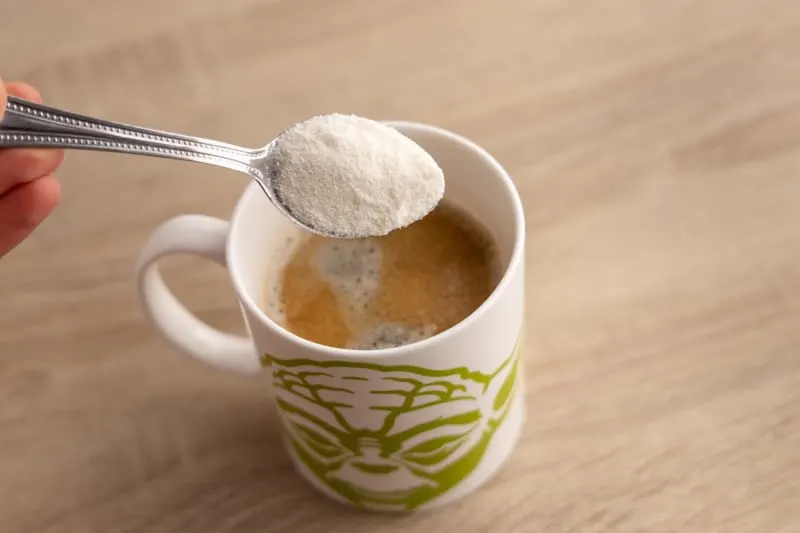
Storage
Store powdered coffee creamers in a cold and dry place, away from heat sources.
Once you first open the package, make sure it’s always sealed tightly if not in use.
If the original package isn’t easily resealable, consider transferring the powder into an airtight container or freezer bag for additional protection. Or at least use a sealing clip.
Verdict on Powdered Creamers
Powdered creamers are great if you need to have a creamer on hand, but you don’t use it all that often. For example, maybe you drink coffee at home only on the weekends or need it when you have someone over.